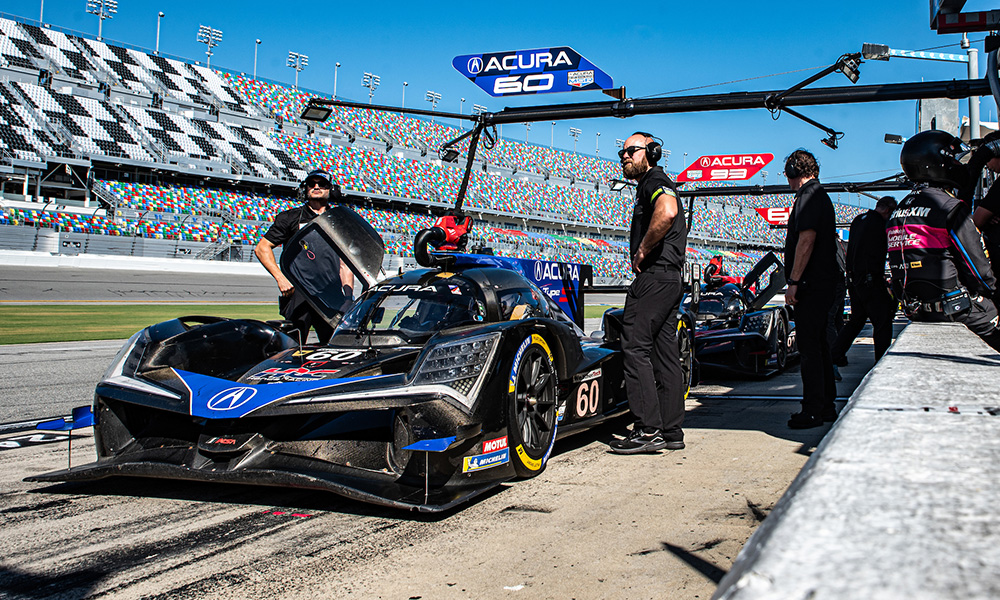
Photo: Brandon Badraoui/IMSA
IMSA has established the Balance of Performance for the GTP and GT classes for next weekend’s Roar Before the Rolex 24, confirming the use of a two-stage system in both the top class prototypes and production-based ranks in the WeatherTech SportsCar Championship.
Released on Thursday, the revised system is similar to what debuted in the FIA World Endurance Championship last year, in what’s known as ‘power gain’, where cars have varying power levels over a threshold speed.
It has been introduced as a further tool by the governing bodies to create closer performance levels, particularly for cars with different weights, engine configurations and engine locations, the latter in the case of GT machinery.
IMSA has set that thresholds for the high-speed Daytona International Speedway at 230 km/h (143 mph) and 240 km/h (150 mph) for GTP and 190 km/h (118 mph) and 200 km/h (124 mph) for the GTD Pro and GTD classes.
The only GTP car that will have power gain at speeds over 150 mph will be the Cadillac V-Series.R, which gets an 8.3 percent increase over its base maximum power of 480 kW, which is by far the lowest power output among the five LMDh prototypes in the so-called first stage.
The BMW M Hybrid V8, Lamborghini SC63 and Porsche 963 will all have the maximum-allowed 520 kW power at speeds below 143 mph, while the Acura ARX-06 gets 518 kW at the first level.
Last year’s Rolex 24-winning Porsche, has the biggest change at speeds above 150 mph, at a -4.2 percent reduction in its max power.
In terms of minimum weight, the BMW and Lamborghini will both be eligible to run at 1030 kg, the lightest of the cars, followed by the Porsche at 1041 kg and the Acura and Cadillac both at 1060 kg.
This compares to last year’s Rolex 24 which saw the Cadillac and BMW run at 1030 and 1031 kg, respectively, with the Acura being the heaviest at the time at 1072 kg. However, those weights came under a static power output for all cars.
All-New BoP Table for GT Classes With Torque Sensor Introduction
GTD and GTD Pro, meanwhile, features an all-new BoP table that no longer sees power measured by kW.
Instead, power output for the GT3 cars is dictated by the percentage of maximum declared power per manufacturer, which is measured from the new-for-2025 torque sensors.
As is the case in GTP, the GT classes will have varying power levels between speed segments.
For instance, the Porsche 911 GT3 R gets 100 percent of its declared power at speeds less than 118 mph and 99.2 percent of its power above 124 mph.
The Mercedes-AMG GT3 Evo is in the opposite spectrum, with 97.7 percent of power at lower speeds and 100 percent of power in the second stage.
Minimum weights between the nine GT3 cars range from 1325 kg (Aston Martin Vantage GT3 Evo and Ford Mustang GT3) to 1398 kg (Lamborghini Huracan GT3 EVO2).
IMSA reserves the right to make BoP adjustments in both classes of cars following the mandatory three-day test, with changes likely to occur in the GT ranks following its ‘Targeted Performance Testing’ that is set to occur during the Roar weekend for the GTD Pro and GTD entries.






















